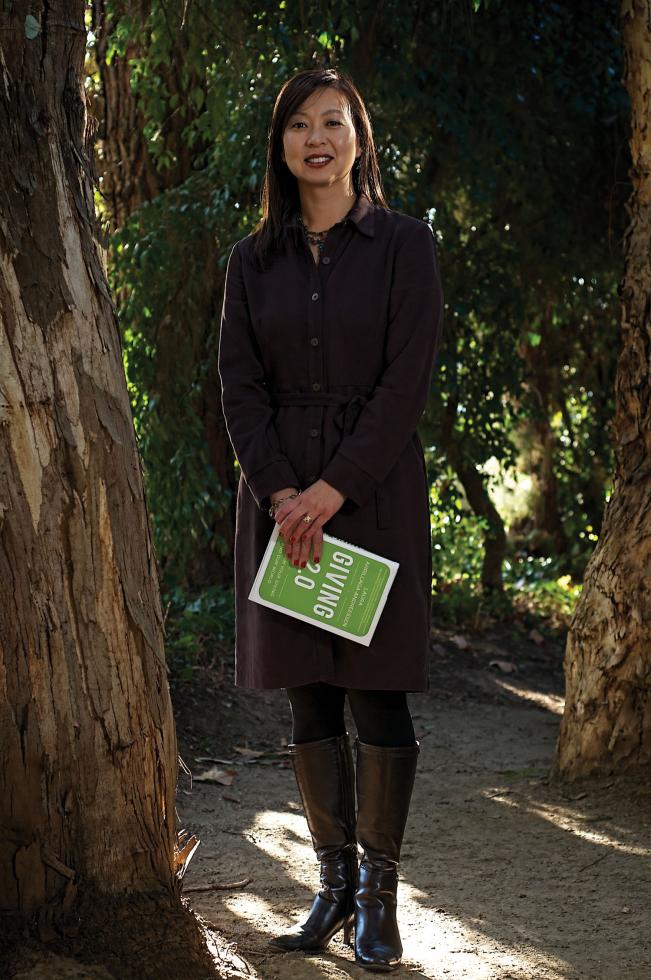Charities come in all sizes, dedicated to myriad causes, and generous donations to a small, do-good organization sometimes will make a big difference.
But how are the philanthropically minded to know if a little nonprofit without the profile of, say, the American Heart Association or Salvation Army, is legitimate and worthy of their generosity?
Do some research, then follow your instincts, says Priscilla Enriquez, chief giving officer for the Sacramento Region Community Foundation, which manages more than 400 charitable funds for donors entrusting it with their money and/or assets. The foundation handed out more than $4 million in grants in 2010.
For those who want to go it alone, Enriquez has some advice on how to vet a small charity.
“As a donor, there are all kinds of things you might want to care about,” she says. “I recommend that you visit the charity. People think they can’t do that, but they can. It’s your money, and no matter how small your donation, you have every right. I recommend that you ask: ‘How do you perform your services?’ Who is on the board of directors, and do they have a sense of the issues they’re serving?
“And then the same things you look for in your daily life, you should look for in a nonprofit. Do they return your phone calls? Do they send a thank-you note after you write a check? These are some of the simple things people can use to gain confidence in making a donation.”
Before writing a check, be sure the organization has a tax-exempt 501(c)(3) status from the Internal Revenue Service, as nonprofits must follow strict guidelines to accept charitable contributions.
When checking out a small charity, request a copy of its operating budget, Enriquez advises. “Ask them where the money is going. Is it going to overhead or staff, or is it all going back to the community? Maybe you want to make sure they’re hiring really competent people and paying them well, and you don’t mind that a portion of your donation is going to support operating costs and personnel. It depends on what a donor is interested in.”
Ask for the most recent annual audit, as well. It might reveal the nonprofit is operating at a deficit, and that’s a red flag, Enriquez says.
Investigating a perhaps obscure charity will require diligence and time, but United Way California Capital Region can provide a shortcut. Each year, United Way vets more than 140 health and human services agencies in five counties — Sacramento, Amador, El Dorado, Placer and Yolo — and makes a public list of its “certified partners,” along with a brief description of services rendered and website links.
“We have put all of these agencies through a pretty stern test,” says United Way president and CEO Steve Heath. “We are not interested in having on our list organizations with a phone that rings in San Francisco or Dallas or somewhere else. They have to be real, viable, legitimate and stable organizations, offering health and human services to the community. We don’t want donors’ dollars to be the last through the doors before they close. There are a lot of organizations that do very good work that don’t make a lot of noise in this world.”
United Way staff scrutinizes two items on every nonprofit’s audit report: net cash from operations and net assets. The standard was put into place a few years ago, Heath says, “and we’re about the only United Way I know of in the country that does that.”
Among the small nonprofits earning the agency’s seal of approval are Sacramento Self-Help Housing, which assists homeless families, and Friends for Survival Inc., a bereavement program for those who have lost a loved one to suicide. Heath is particularly fond of Friends Care, which has one employee and works with children who have an incarcerated parent. The all-volunteer Convalescent Hospital Card & Visiting Association has no staff at all.
When checking out the bones of a nonprofit, Heath advises not to worry too much about overhead expenses. “I think that as a tool, overhead is vastly overrated. Obviously, nobody should be loosely spending donor dollars, but the real issue is what kind of outcomes the organization gets,” he says. “And if it spends X amount on administration to get that result or X amount on fundraising to get that result, then overhead is not a bad thing necessarily.”
The United Way solicits donations each year from 500 or so area businesses and their employees. The region’s weak economy and high unemployment rate caused a considerable drop in giving, Heath says. Donations dipped to $12 million in 2010, down from $14 million before the recession took hold. But the good news, he says, is that it’s not getting worse: “Our sense is that we’ve bottomed out.”
Charitable contributions are making a comeback nationally, as well. Giving USA Foundation and its research partner, The Center on Philanthropy at Indiana University, report donations were up 3.8 percent in 2010 after 2008 and 2009 “saw the largest drops in giving in more than 40 years.”
Charities in the Sacramento region have worked tirelessly through the recession, some seeing a dramatic increase in the number of people seeking aid.
Philanthropists will have all sorts of reasons for choosing a particular small nonprofit to help.
“People like to give with their heart,” Enriquez says. “Most donors sometimes will have a relationship with the issue that a nonprofit serves, but the biggest factor is sometimes friends and family, who are very influential. You trust them and their decision-making, and you might invest that way.”
She warns donors to be on the lookout for scams and not to give money to a cold caller with a heart-wrenching story. Do your homework first.
“If you don’t have time to do the research, that’s not something I would do because you just never know,” Enriquez says. “I think you should trust your gut. People don’t give that enough credence. If you don’t feel it’s right, then don’t make the donation, in spite of the sad story.”
Recommended For You

The Learned Philanthropist
Academic programs for philanthropists and nonprofit leaders are emerging nationwide
After two decades of working in the nonprofit industry, Robin Chronister, an executive assistant for Mother Lode Rehabilitation in Placerville, noticed a gradual but clear change in the nonprofit sector.



